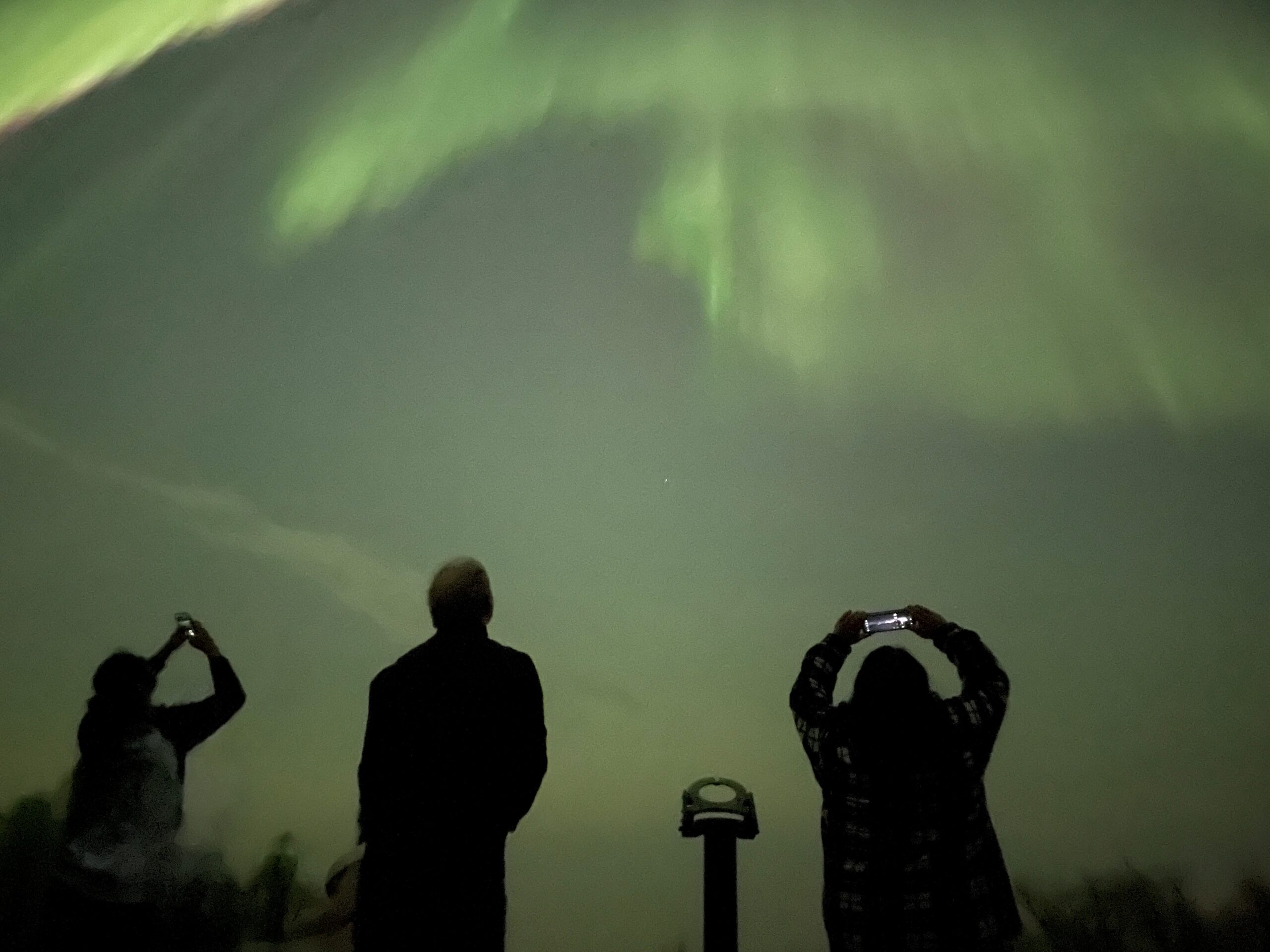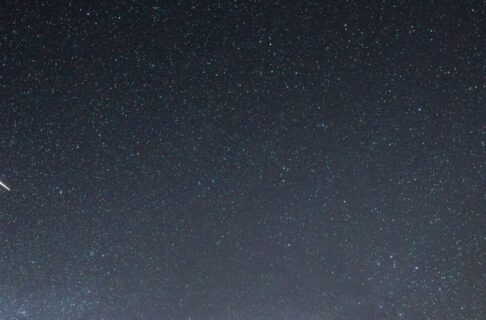Posted on: Thursday May 1, 2025
May brings us later sunsets and shorter nights, making stargazing a late-night affair. With some bright planets, a meteor shower, and lots of interesting events, it’s well worth staying up for.
The Solar System for May 2025
Mercury is too low to the horizon to be visible from Canadian latitudes this month.
Venus is low in the eastern sky just before dawn, only visible because it is so bright that you can spot it even when all the other stars have been devoured by the dawn. It stays in essentially the same spot relative to the horizon each morning, its orbital motion around the Sun offset by our own planet’s motion.
Mars begins the month near the Beehive star cluster (M44) in the constellation of Cancer the Crab. It slowly moves left (east) relative to the stars, but the Sun is moving faster and starts to catch up to it. This means Mars is lower at sunset and sets earlier each day. On May 1st, Mars is about halfway up the sky in the west-southwest as it gets dark. By month’s end, it is only about half as high above the horizon and due west once the sky is dark. It’s also fading fast, no longer outshining all of the stars as it did this past winter.
Jupiter is slipping into the sunset as well, low in the west-northwest as darkness falls. It’s already probably too low for very good telescopic views, but take your last looks this month before it disappears completely behind the Sun.
Saturn is low in the east at sunrise, difficult to spot due to the bright twilight until mid-month. The ringed planet reaches its equinox in May, which means the rings are perfectly aligned with the Sun and cast no shadow on the planet. The rings are largely invisible from Earth as well, being tilted only a few degrees from our line of sight.
Uranus passes behind the Sun as seen from Earth on May 17, and is invisible all month.
Neptune is near Venus in the bright twilight sky before sunrise, but will be very difficult to spot until later this year (and impossible without a telescope)..
Of the five known dwarf planets, none are visible with typical backyard telescopes this month. However, the asteroid (4) Vesta reaches its brightest point this month, just barely visible to the unaided eye as a faint “star” in a sea of other faint stars. Figuring out which dot is Vesta requires patience and a detailed chart like the one in the RASC Observer’s Handbook or planetarium software like Stellarium.
Sky Calendar for May 2025
All times are given in the local time for Manitoba: Central Daylight Time (UTC-5). However, most of these events are visible across Canada at the same local time without adjusting for time zones.
Thursday, May 1, 2025 (evening): Mars and the Beehive star cluster are in the same field of view of a typical pair of binoculars tonight, and for the next several nights. You can spot Mars’ motion from night to night against the distant background stars.
Friday, May 2, 2025 (all night): The asteroid Vesta is at its brightest, although it will be almost the same brightness for the next two weeks.
Saturday, May 3, 2025 (evening): The nearly-first-quarter Moon joins Mars and the Beehive star cluster (see image above). Today is also International Astronomy Day, and events are planned across the country and around the world to bring astronomy to the public. The Planetarium will join the Winnipeg Centre of the Royal Astronomical Society of Canada and Assiniboine Park Conservancy for a free telescope session at Assiniboine Park near the duck pond (weather permitting). Event details here.
Sunday, May 4, 2025 (evening): First Quarter Moon.
Tuesday, May 6, 2025 (morning): Saturn’s rings cast no shadow on the planet (visible only in telescopes). This morning is also the peak of the annual Eta Aquariid meteor shower, which may produce about 10 meteors per hour in the hours between 2am and dawn today.
Monday, May 12, 2025: Full Moon.
Tuesday, May 20, 2025: Last Quarter Moon.
Thursday, May 22, 2025 (morning sky): The Moon is near Saturn in the predawn sky, with brighter Venus farther east.
Friday, May 23, 2025 (morning sky): The Moon has moved to a point midway between brilliant Venus and much fainter Saturn, low in the eastern sky before sunrise.
Monday, May 26, 2025 (evening): New Moon

Outside of the regular events listed above, there are other things we see in the sky that can’t always be predicted in advance.
Aurora borealis, the northern lights, are becoming a more common sight again as the Sun goes through the maximum of its 11-year cycle of activity. Particles from the Sun interact with the Earth’s magnetic field and the high upper atmosphere to create glowing curtains of light around the north (and south) magnetic poles of the planet. Manitoba is well-positioned relative to the north magnetic pole to see these displays often, but they still can’t be forecast very far in advance. A site like Space Weather can provide updates on solar activity and aurora forecasts for the next 48 hours. The best way to see the aurora is to spend a lot of time out under the stars, so that you are there when they occur.,
Random meteors (also known as falling or shooting stars) occur every clear night at the rate of about 5-10 per hour. Most people don’t see them because of light pollution from cities, or because they don’t watch the sky uninterrupted for an hour straight. They happen so quickly that a single glance down at your phone or exposure to light can make you miss one.
Satellites are becoming extremely common sights in the hours after sunset and before dawn. Appearing as a moving star that takes a few minutes to cross the sky, they appear seemingly out of nowhere. These range from the International Space Station and Chinese space station Tianhe, which have people living on them full-time, to remote sensing and spy satellites, to burnt-out rocket parts and dead satellites. These can be predicted in advance (or identified after the fact) using a site like Heavens Above by selecting your location.






